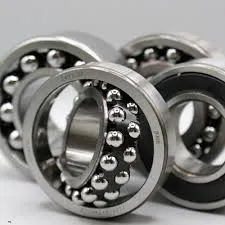
nov . 10, 2024 18:46 Back to list
Design Considerations for Tapered Bearing Housing in Mechanical Applications
Tapered Bearing Housing An Overview
In the world of engineering and machinery, tapered bearing housings play a crucial role in ensuring smooth operation and longevity of rotating equipment. These components are integral to various industries, including automotive, aerospace, and manufacturing. In this article, we will explore the significance, design, and applications of tapered bearing housings.
Understanding Tapered Bearings
Tapered bearings, also known as tapered roller bearings, are designed to support axial and radial loads. The unique geometry of these bearings—characterized by conical rollers and raceways—enables them to handle heavy loads while facilitating smooth rotation. The tapered shape allows for an optimally distributed load, reducing stress concentration and wear.
Tapered bearings are distinct from other bearings due to their capacity to manage combined loads. While radial bearings are primarily designed for radial loads, tapered bearings excel when both axial and radial forces are at play. This versatility makes them an ideal choice for a wide array of applications.
The Role of Tapered Bearing Housings
Tapered bearing housings provide the necessary support and protection to tapered bearings. These housings are precision-engineered to hold the bearing securely in place, ensuring optimal alignment and minimizing the risk of misalignment during operation. A well-designed housing enables the bearing to function efficiently, ultimately enhancing the overall performance of the machine.
The primary functions of tapered bearing housings include
1. Load Distribution They distribute the loads applied to the bearing evenly, which prolongs the life of both the housing and the bearing. 2. Alignment Proper alignment is critical for the performance of tapered bearings. Housings help maintain this alignment, which may be affected by operational stresses or thermal expansion. 3. Protection Housings shield the bearings from contaminants such as dust, dirt, and moisture, which can lead to premature failure.
4. Ease of Installation and Maintenance A well-designed bearing housing allows for easier installation and removal of the bearings, facilitating routine maintenance and inspection.
Design Considerations
The design of tapered bearing housings is paramount to their efficiency and durability
. Several factors should be considered during the design processtapered bearing housing

1. Material Selection The material used for the housing must withstand high loads, resist wear, and tolerate environmental conditions. Common materials include cast iron, steel, and various advanced alloys.
2. Dimensional Accuracy Housings must be designed with precise tolerances to ensure proper fit with the bearing. This precision is critical to avoid misalignment and to optimize performance.
3. Cooling and Lubrication Adequate cooling and lubrication systems should be integrated into the design to dissipate heat generated during operation and ensure that the bearings operate smoothly.
4. Sealing Mechanisms Effective sealing solutions are essential to prevent contaminants from entering the housing while also ensuring that lubrication remains within the bearing assembly.
Applications of Tapered Bearing Housings
Tapered bearing housings are utilized in a multitude of applications across various sectors
1. Automotive Industry They are commonly found in vehicle wheel hubs, axle assemblies, and transmissions, where they facilitate smooth rotation and support heavy loads.
2. Aerospace Engineering Tapered bearings are used in aircraft landing gear and engine components, where reliability and precision are non-negotiable.
3. Industrial Machinery Heavy machinery such as crushers, conveyors, and gearboxes often employ tapered bearing housings to handle significant loads and vigorous operation.
4. Wind Turbines In renewable energy applications, tapered bearing housings are critical for the performance of wind turbine gearboxes, ensuring efficiency and resilience against varying environmental conditions.
Conclusion
Tapered bearing housings are indispensable components in modern machinery and play a pivotal role in ensuring operational efficiency and equipment longevity. Their unique design and ability to accommodate both axial and radial loads make them a preferred choice across various industries. As technology advances, continued innovations in the design and materials used for tapered bearing housings will further enhance their performance and capabilities, securing their place in the machinery of the future.
Latest news
-
Grooved Ball Bearing Design and Functionality
NewsJun.04,2025
-
Concrete Mixer Bearing Load Capacity Testing
NewsJun.04,2025
-
6004 Bearing Dimensions in Robotic Joint Designs
NewsJun.04,2025
-
Advantages of Single-Row Deep Groove Ball Bearings
NewsJun.04,2025
-
Applications of Deep Groove Ball Bearings in Automotive Systems
NewsJun.04,2025
-
Innovations in Bearing Pressing Machine Design
NewsJun.04,2025
